Getting the right EQ on a nylon guitar changes the whole vibe, whether tracking in a studio or rocking a live show. Knowing how to tweak those tones can bring out the warm, rich sounds that make nylon strings shine. I once dialed in some EQ settings that boosted the crisp highs without losing the mellow lows, and it made the guitar stand out like never before. Did you know that subtle EQ boosts between 2kHz and 5kHz add sparkle that cuts through a mix? This helps players, producers, and sound engineers get a clear, full-bodied tone that feels alive. Keep this in mind next time a nylon guitar sits in your setup—you might unlock a sound that wakes up the whole room.
In this comprehensive guide, we’ll cover all you need to know about EQing a nylon guitar, covering essential techniques, common settings for various musical styles, advanced tips, and more.
Understanding the Nylon Guitar’s Frequency Spectrum
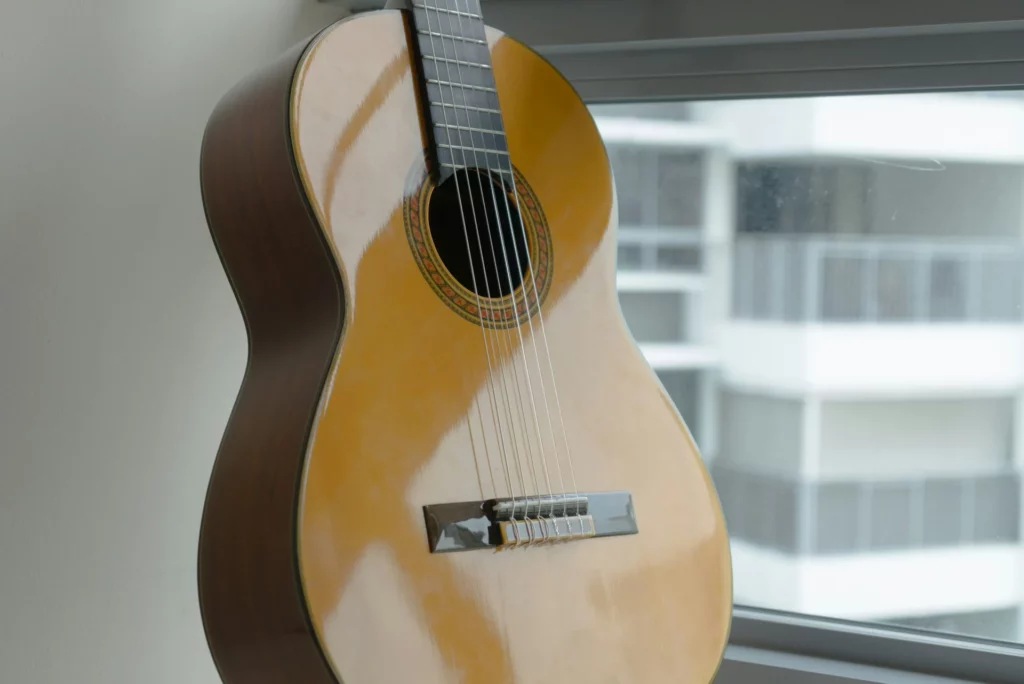
Before we delve into specific EQ techniques, it’s important to understand the typical frequency range of a nylon guitar.
Nylon guitars generally have a warm, mellow tone compared to their steel-string counterparts. The fundamental frequencies of a nylon guitar typically lie between 80 Hz and 1 kHz, with harmonics extending up to around 8 kHz.
The lower frequencies contribute to the guitar’s body and warmth, while the higher frequencies provide clarity and definition.
Nylon guitars are known for their rich, complex overtones and a slightly percussive attack.
The unique timbre of a nylon guitar is influenced by factors such as the guitar’s construction, the type of nylon strings used, and the player’s technique.
Understanding these characteristics will help you make informed decisions when EQ-ing your nylon guitar.
Need Access To High Quality EQ VST Plugins?
7-Day-Money-Back-Guarantee
Essential EQ Techniques for Nylon Guitar

High-Pass Filtering
One of the first steps in EQ-ing a nylon acoustic is to use a high-pass filter (HPF) to remove unwanted low-end frequencies.
These frequencies can often make the guitar sound muddy or boomy, especially when recorded in a small room or with close microphone placement.
A good starting point is to set the HPF around 80-100 Hz, depending on the specific guitar and the desired sound.
Adjusting Low-Mids
The low-midrange frequencies, typically between 200-500 Hz, are crucial for the warmth and body of a nylon guitar. However, too much energy in this range can result in a muddy or congested sound.
To address this, you can make subtle cuts in the 200-300 Hz range to reduce muddiness while preserving the guitar’s warmth. Be cautious not to overdo the cuts, as this can thin out the guitar’s tone.

Tweaking High-Mids and Presence
The high-midrange frequencies, around 1-4 kHz, are responsible for the clarity and presence of a nylon guitar. Boosting these frequencies can help the guitar cut through a mix and provide definition to the sound.
However, be mindful of potential harshness or brittleness that can occur with excessive boosting. A gentle boost in the 2-3 kHz range can often enhance the guitar’s presence without introducing unwanted artifacts.
Treble Adjustments
The treble frequencies, above 4 kHz, contribute to the sparkle, airiness, and overtones of a nylon guitar. Boosting these frequencies can add a sense of openness and detail to the sound.
However, be cautious not to overdo the treble boost, as it can result in a thin or piercing tone. A subtle boost in the 5-8 kHz range can often provide the desired sparkle without compromising the guitar’s natural timbre.
Common EQ Settings for Different Musical Styles
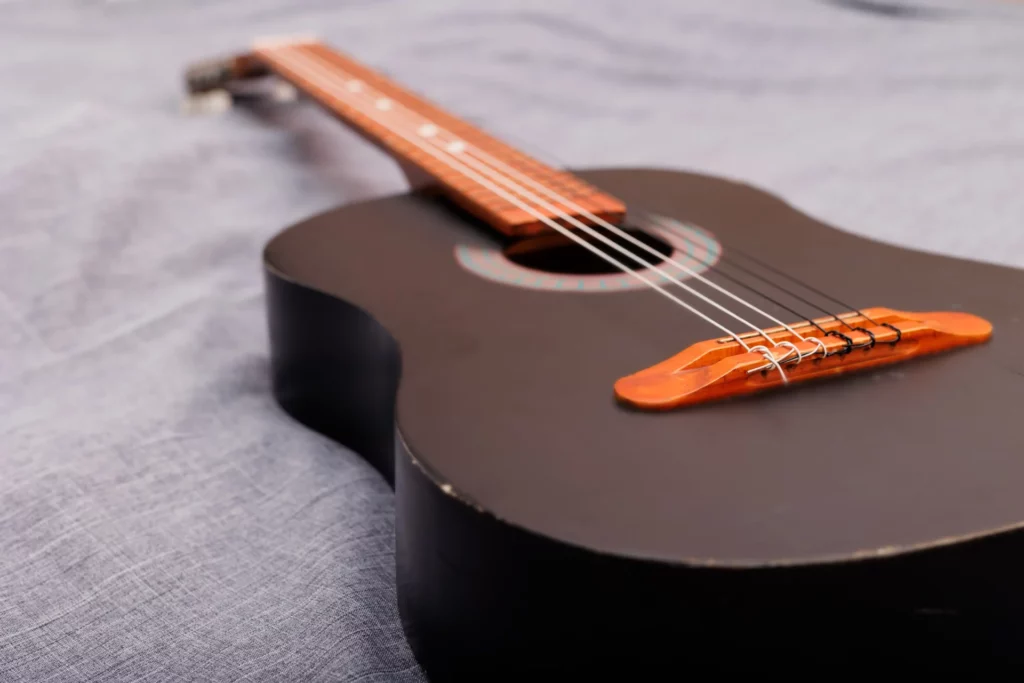
Classical
When EQ-ing a nylon guitar for classical music, the goal is often to preserve the instrument’s natural acoustic character and dynamics.
A gentle high-pass filter around 80 Hz can help remove any unwanted low-end rumble, while subtle boosts in the 2-4 kHz range can enhance clarity and presence.
Avoid excessive EQ adjustments that may compromise the guitar’s inherent tonal balance and expressiveness.
Flamenco
Flamenco guitar playing often involves percussive techniques and a brighter, more aggressive sound compared to classical playing.
When EQ-ing for flamenco, you may want to emphasize the high-midrange and treble frequencies to highlight the guitar’s percussive elements and cutting power.
A slight boost in the 3-5 kHz range can add extra brightness and definition to the sound.
Be mindful not to overdo the high-frequency boost, as it can result in a harsh or brittle tone.
Jazz and Bossa Nova
For jazz and bossa nova styles, a balanced and warm EQ setting is often desirable to blend well with other instruments in an ensemble.
A gentle high-pass filter around 100 Hz can help clean up any low-end muddiness, while subtle boosts in the 200-500 Hz range can enhance the guitar’s warmth and body.
A slight boost in the 2-3 kHz range can provide clarity and presence without compromising the guitar’s smooth and mellow character.
Advanced EQ Techniques For Nylon Acoustic Guitars
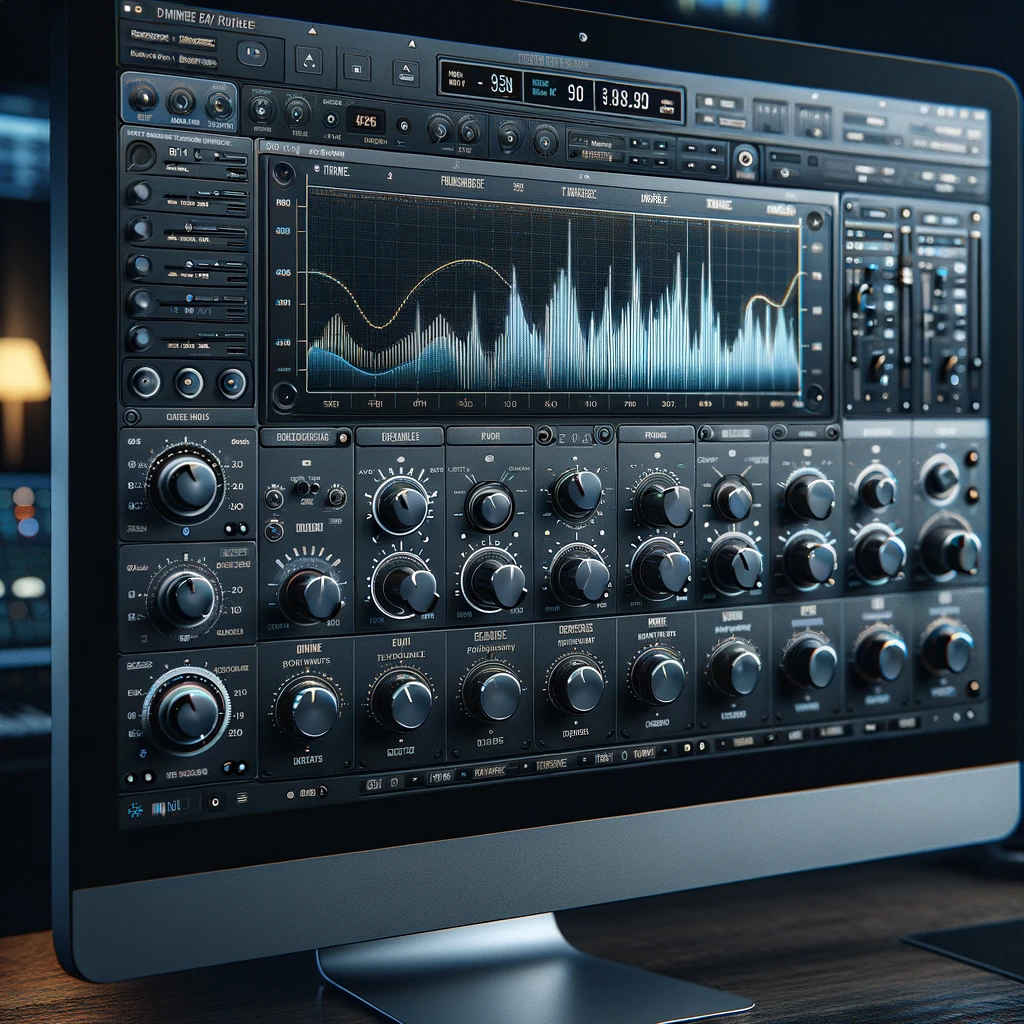
Dynamic EQ
Dynamic EQ is a powerful tool that combines the precision of EQ with the dynamic control of compression. Unlike traditional static EQ, dynamic EQ adjusts the amount of boost or cut based on the input signal level.
This allows for more natural and transparent EQ adjustments, especially when dealing with complex and dynamic nylon guitar performances.
Dynamic EQ can be particularly useful for taming harsh frequencies that only occur during certain passages or for smoothing out inconsistencies in the guitar’s tone.
Multiband Compression
Multiband compression is another advanced technique that can be used as an alternative to traditional EQ.
By dividing the frequency spectrum into multiple bands and applying compression independently to each band, you can achieve a more balanced and controlled sound.
Multiband compression can be especially helpful for managing the dynamic range of a acoustic guitar, ensuring that the low-end remains tight and the high-end remains smooth and controlled.
EQ Tips for Live Performances vs. Studio Recordings

When EQ-ing a nylon guitar for live performances, the approach may differ from studio recordings due to the unique challenges of acoustic environments and sound systems.
In live settings, the goal is often to achieve a clear, feedback-resistant sound that cuts through the mix without overpowering other instruments.
A more aggressive high-pass filter, around 120-150 Hz, can help reduce low-end feedback and improve clarity.
Boosting the midrange frequencies, particularly around 2-4 kHz, can enhance the guitar’s presence and projection in a live setting.
For studio recordings, you have more control over the acoustic environment and can take a more nuanced approach to EQ.
Start with a gentler high-pass filter, around 80-100 Hz, and make subtle adjustments in the midrange and treble frequencies to achieve the desired tonal balance
Pay attention to the guitar’s interaction with other instruments in the mix and use EQ to carve out a distinct space for the nylon guitar in the frequency spectrum.
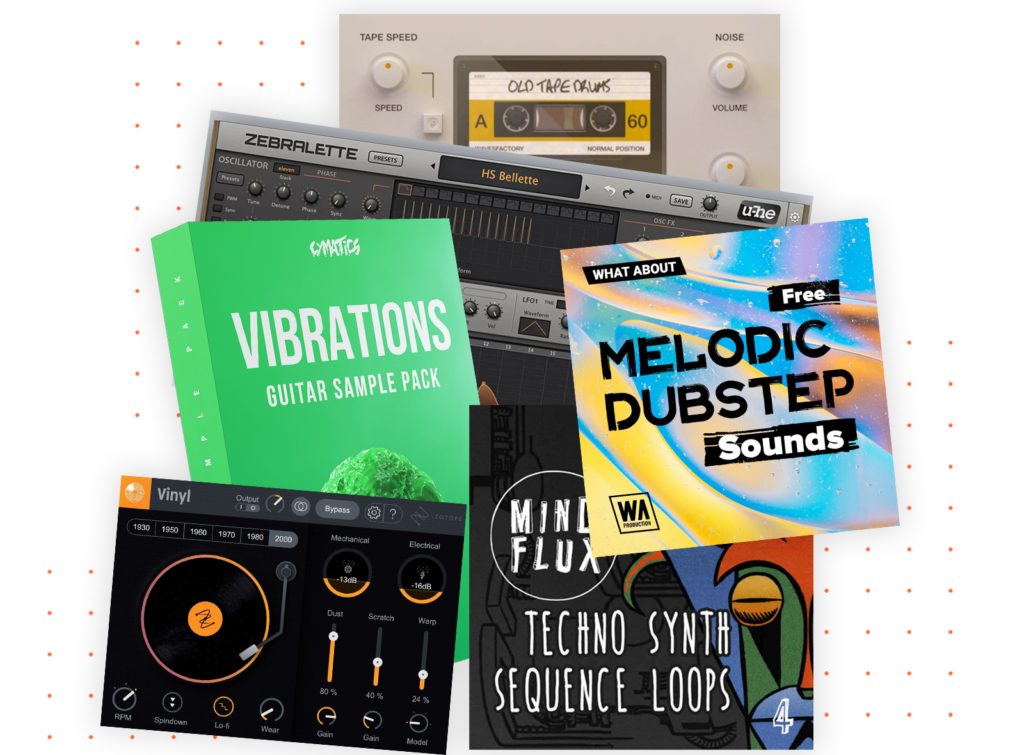
Access 4,000+ Music Tools
Access our entire library of music tools including sample packs, VST plugins, DAW templates, and much more.
Troubleshooting Common Nylon Guitar EQ Issues
Boominess and Muddiness
If your nylon guitar sounds boomy or muddy, the issue likely lies in the low-end and low-midrange frequencies.
Apply a high-pass filter to remove excessive low-end energy and make targeted cuts in the 200-300 Hz range to reduce muddiness. Be careful not to overdo the cuts, as this can thin out the guitar’s tone.
Thinness and Lack of Body
If your nylon guitar sounds thin or lacks body, you may need to boost the low-midrange frequencies. A gentle boost in the 200-500 Hz range can add warmth and fullness to the guitar’s tone.
Additionally, check your high-pass filter settings to ensure you’re not cutting too much of the low-end frequencies.
Harshness and Brittleness
Harshness and brittleness in a nylon guitar’s tone often stem from excessive high-midrange and treble frequencies.
To address this, make targeted cuts in the 2-4 kHz range to tame any harsh resonances.
Be cautious not to overdo the cuts, as this can dull the guitar’s clarity and presence. A gentle boost in the 5-8 kHz range can often add a pleasant sparkle without introducing harshness.
Feedback Issues in Live Performance
Feedback is a common issue when amplifying nylon guitars in live settings. To combat feedback, start by applying a high-pass filter to remove low-end frequencies that are prone to feedback.
Identify the specific frequencies that are causing the feedback and make narrow cuts using a parametric EQ. Experiment with microphone placement and use acoustic treatment or feedback suppressors if necessary.
Utilizing EQ Plugins and Hardware
There are numerous EQ plugins and hardware units available for shaping the sound of your nylon guitar.
These plugins offer a range of features, including high-pass filters, parametric EQ bands, and dynamic EQ capabilities. They provide a flexible and intuitive interface for fine-tuning the frequency spectrum of your nylon guitar.
Hardware EQ units, such as the API 550A, Neve 1073, and Manley Massive Passive, are also highly regarded for their analog warmth and musicality.
While more expensive than plugins, hardware EQs can impart a unique character and depth to the sound of your nylon guitar. They are particularly favored in professional recording studios for their tactile controls and high-quality components.
Case Studies and Examples
To illustrate the practical application of EQ techniques, let’s examine a few case studies and examples from popular nylon guitar tracks:
“Mediterranean Sundance” by Al Di Meola
In this virtuosic flamenco-inspired piece, the nylon guitar is EQ’d to emphasize the bright, percussive attack and the shimmering treble frequencies.
A slight boost in the 3-5 kHz range enhances the guitar’s presence and clarity, while a gentle high-pass filter around 100 Hz keeps the low-end tight and focused.
“The Girl from Ipanema” by João Gilberto
For this bossa nova classic, the nylon guitar is EQ’d to achieve a warm, mellow tone that blends seamlessly with the vocals and other instruments.
A subtle boost in the 200-500 Hz range adds body and warmth to the guitar, while a gentle cut in the 2-3 kHz range prevents any harshness or brittleness.
“Asturias (Leyenda)” by Isaac Albéniz
In this classical guitar masterpiece, the EQ is kept relatively flat to preserve the natural acoustic character of the nylon guitar.
A gentle high-pass filter around 80 Hz removes any unwanted low-end rumble, while a subtle boost in the 2-4 kHz range enhances the guitar’s clarity and definition.
Sound engineers and guitarists specializing in nylon-string guitars often emphasize the importance of using EQ judiciously and in context with the specific musical style and recording situation.
As Grammy-winning engineer Dave Reitzas states, “EQ is not about making something sound ‘better,’ it’s about making it sound ‘appropriate’ for the song and the mix.”
Additional Resources
To further deepen your understanding of EQ-ing nylon guitars, consider exploring the following resources:
- Mixing Secrets for the Small Studio by Mike Senior
- The Ultimate Live Sound Operator’s Handbook by Bill Gibson
- The Art of Mixing: A Visual Guide to Recording, Engineering, and Production by David Gibson
- The Nylon String Guitar Forum
- EQ Fundamentals video tutorial by FabFilter
By combining the knowledge gained from this guide with hands-on practice and continuous learning, you’ll be well-equipped to achieve professional-sounding results when EQ-ing your nylon guitar in various recording and performance situations.
Looking For The Best Music Production Tools Available?

SoundShockAudio has got you covered.
Access our vast library of over 4,000 tools to create professional-sounding music.
Need more help when it comes to EQing?
Check out these articles:

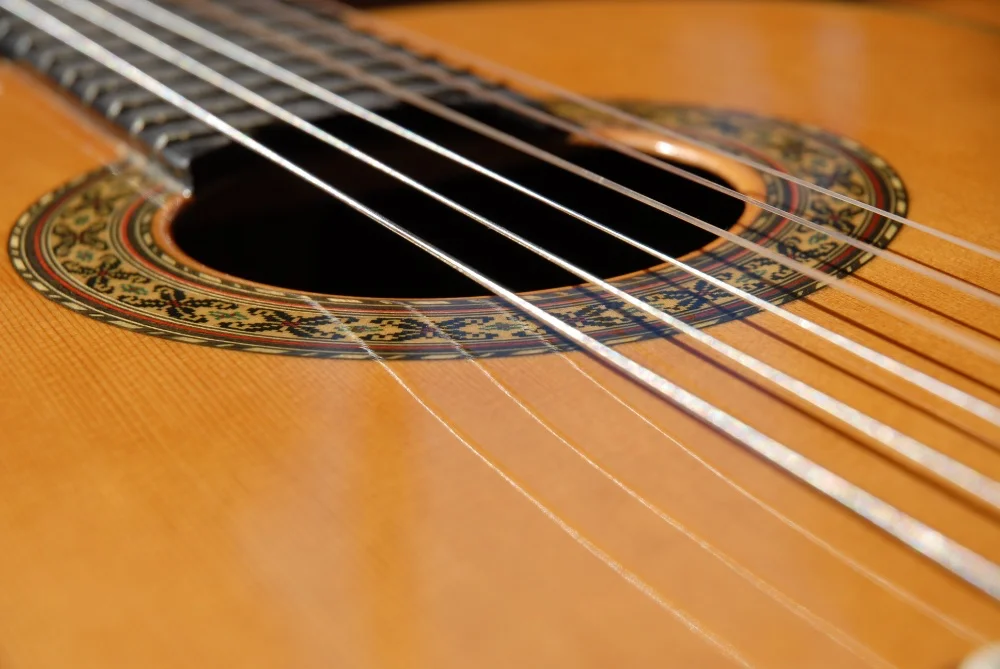



really loved the section on advanced eq techniques, never thought about using dynamic eq on my nylon strings. gonna try it out, thx for the tips Daniel!
hey, ive been trying to get into nylon guitar recently and this EQ thing seems complicated. does anyone know how i can start simple with EQing? wanna make sure i dont mess up my sound. thanks!
Hey Sarahj, starting with a high-pass filter is a good move. Just cut off the lowest frequencies that are not necessary for the guitar’s sound. Keeps it clean without being too tricky!
Also, try playing around with the mid range. A lot of the nylon guitar’s character comes from there. Experiment to see what sounds best to you.
Could you explain a bit more about multiband compression and how it helps in refining the nylon guitar’s sound? I’m a bit new to this but your article has sparked my interest.
dynamic EQ sounds like a game changer for live performances. gonna have to try that out. Anyone else use it before for nylon guitars?
I’ve always had trouble with feedback issues during live performances. Glad I’m not the only one. Gonna use these tips next time.
Isn’t multiband compression overkill for a nylon guitar? I always thought keeping it simple preserved the natural sound better. Curious to hear others’ thoughts.
While I agree with most of your EQ settings for different music styles, I think Jazz and Bossa Nova settings can vary more depending on the song’s mood. Would love to discuss this further.
Just a heads up, the piece ‘Asturias (Leyenda)’ by Albéniz is not originally for guitar, but it’s a popular choice among guitarists. Always fun to see how people adapt it with their EQ settings.
not much into classical but this makes me wanna try nylon guitar sounds in my tracks, might blend well with metal who knows
The section on Treble Adjustments is quite accurate. It’s crucial for clarity, especially in higher registers without introducing harshness. Well explained.
agree with this, noticed a huge difference when i played around with the treble on my setup, its all about that balance.
Love the section on jazz and bossa nova. Getting the right EQ can really bring out the smooth tones needed for these styles. Props to Daniel for including that.
digging the jazz eq settings, always good to find new ways to tweak the sound. keep the jazz content coming!
if my guitar was a color itd def be a shimmering blue after adjusting the treble like in the guide. makes it sound so clear, like a sunny sky.
That’s a beautiful way to describe your sound, pixeldreamer. It’s all about capturing that perfect vibe.
this all sounds great but whats the catch? do i really need all these plugins to get a decent sound or is it just overkill?
everyone’s all hyped about EQ settings, and im just here tryna make sure my guitar is tuned right lol. guess i got a long way to go.